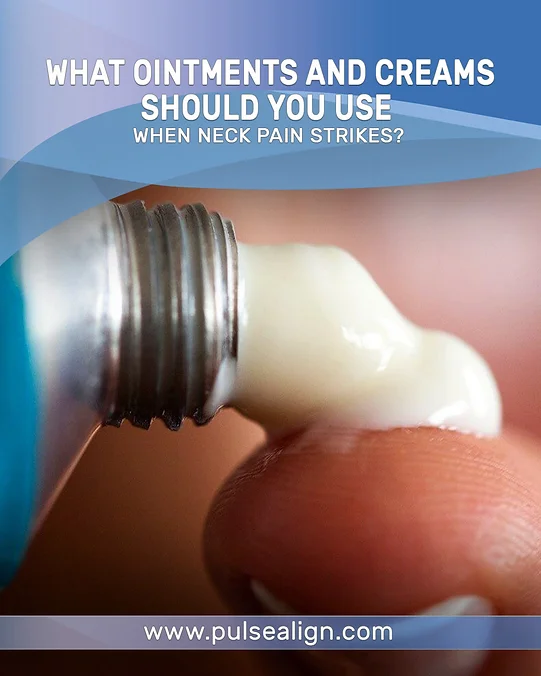Introduction:
Neck pain is a prevalent issue that affects millions of people worldwide. It can be caused by various factors, such as poor posture, muscle strain, or underlying medical conditions. While there are several treatment options available, topical ointments and creams have gained popularity as a convenient and non-invasive method to alleviate neck pain. This comprehensive guide will provide an overview of the different types of ointments and creams available, how they work, and tips for choosing the right product for your needs. Additionally, it’s essential to remember that ointments and creams only treat symptoms, so addressing the root cause of neck pain is crucial for long-term relief.
Common Causes of Neck Pain
Understanding the underlying causes of neck pain is essential for finding the most effective treatment options. Some common causes of neck pain include:
- Muscle Strain: Overuse or strain of the neck muscles can lead to pain and stiffness. This often results from poor posture, awkward sleeping positions, or repetitive activities that put stress on the neck.
- Poor Posture: Spending long hours hunched over a computer, smartphone, or other devices can cause chronic neck pain. Maintaining an incorrect posture for an extended period places extra strain on the neck muscles and ligaments.
- Whiplash: A sudden jolt or movement, such as in a car accident, can cause whiplash, leading to neck pain, stiffness, and reduced range of motion.
- Degenerative Disc Disease: As we age, the discs in our spine may lose their flexibility and height, causing neck pain and stiffness.
- Arthritis: Osteoarthritis, a degenerative joint disease, can affect the neck’s facet joints, leading to pain and reduced mobility.
- Nerve Compression: Herniated discs or bone spurs in the neck can put pressure on the nerves, resulting in pain that radiates down the arm.
- Underlying Medical Conditions: In rare cases, neck pain can be a symptom of more serious medical conditions, such as infections, tumors, or certain diseases.
It’s essential to identify the cause of your neck pain to choose the most appropriate treatment options, including topical ointments and creams.
Types of Topical Ointments and Creams
Topical ointments and creams can be categorized into three primary types:
- Analgesic Creams: These creams contain pain-relieving ingredients, such as menthol or camphor, that provide a cooling or warming sensation to the affected area, temporarily alleviating pain.
- Anti-inflammatory Ointments: These ointments contain nonsteroidal anti-inflammatory drugs (NSAIDs), such as diclofenac or ibuprofen, which help to reduce inflammation and relieve pain.
- Muscle Relaxant Creams: These creams contain ingredients that help relax tight muscles and alleviate pain associated with muscle tension or spasms.
How Topical Ointments and Creams Work for Neck Pain Relief
Topical ointments and creams provide localized relief by acting directly on the affected area. When applied to the skin, the active ingredients penetrate the skin and target the underlying tissues, reducing inflammation, muscle tension, and pain. This allows for faster relief compared to oral medications, which need to be absorbed by the digestive system before reaching the affected area.
Choosing the Right Ointment or Cream for Your Neck Pain
To select the most suitable ointment or cream for your neck pain, consider the following factors:
- Identify the cause of your pain: Choose a product that targets the primary cause of your neck pain, such as an anti-inflammatory ointment for pain caused by inflammation.
- Check the active ingredients: Make sure to read the label and understand the active ingredients in the product, ensuring they are appropriate for your specific type of neck pain.
- Consult your healthcare provider: If you are unsure about which product to choose or if you have any underlying medical conditions, consult your healthcare provider for guidance.
Tips for Applying Ointments and Creams Effectively
To maximize the benefits of topical ointments and creams, follow these tips:
- Clean the affected area: Before applying the product, clean the skin to ensure better absorption of the active ingredients.
- Follow the recommended dosage: Use the recommended amount of product and avoid over-application, as it may cause skin irritation.
- Massage the product gently: Gently massage the ointment or cream into the skin to improve absorption and increase blood flow to the area.
- Apply consistently: Use the product as directed, consistently, to ensure the best results.
Don’t Forget the Cause: Understanding that Ointments Only Treat Symptoms
While topical ointments and creams can provide temporary relief from neck pain, it’s crucial to remember that they only address the symptoms, not the underlying cause. For long-lasting relief, it’s essential to identify and address muscle tone asymmetry, which can lead to neck pain. This may involve lifestyle changes, physical therapy, or other treatment options.
When to Consult a Pulse Align Practitioner
Ideally, you should consult a Pulse Align practitioner before the manifestation of neck pain. Pulse Align practitioners are trained to assess and address muscle tone asymmetry, which can lead to neck pain. Focusing on preventative care and maintaining overall wellness, they work to correct imbalances before they progress into more severe issues.
If you are already experiencing neck pain, it is still essential to consult a Pulse Align practitioner. They can help identify the muscle tone asymmetry that may be contributing to your pain and develop a personalized treatment plan tailored to your needs. This may involve a combination of techniques and therapies designed to alleviate pain, improve posture, and correct any imbalances.
In summary, consulting a Pulse Align practitioner before the onset of neck pain is ideal for preventing the issue and maintaining overall well-being by addressing muscle tone asymmetry. However, if you are already experiencing neck pain, a Pulse Align practitioner can still provide valuable support in identifying the imbalances and finding effective solutions for relief. READ ALSO
Conclusion
Topical ointments and creams can be a valuable tool in managing neck pain, offering localized relief with minimal side effects. However, it’s essential to remember that they only treat the symptoms, not the underlying cause. To achieve long-term relief, it’s crucial to identify and address the root cause of your neck pain, in addition to using topical treatments. Always consult a healthcare professional if you have concerns about your neck pain or the most suitable treatment options for your situation.
References
- Mayo Clinic – Neck pain: https://www.mayoclinic.org/diseases-conditions/neck-pain/symptoms-causes/syc-20375581
- WebMD – Topical Pain Relievers: https://www.webmd.com/drug-medication/otc-pain-relief-10/topical-pain-relievers
- Harvard Health Publishing – 4 ways to turn good posture into less back pain: https://www.health.harvard.edu/pain/4-ways-to-turn-good-posture-into-less-back-pain
- American Physical Therapy Association (APTA) – Physical Therapist’s Guide to Neck Pain: https://www.choosept.com/symptomsconditionsdetail/physical-therapist-s-guide-to-neck-pain
- Spine-Health – Topical Pain Relief for Arthritis: https://www.spine-health.com/conditions/arthritis/topical-pain-relief-arthritis
- Cleveland Clinic – How to Choose the Best Over-the-Counter Pain Reliever: https://health.clevelandclinic.org/how-to-choose-the-best-over-the-counter-pain-reliever/
- National Institute of Neurological Disorders and Stroke (NINDS) – Whiplash Information Page: https://www.ninds.nih.gov/Disorders/All-Disorders/Whiplash-Information-Page
As the visionary CEO of Pulse Align, François is dedicated to transforming the landscape of pain management and posture health. With a deep-rooted passion for innovation and a commitment to excellence, François leads the team in developing cutting-edge solutions that empower individuals to live healthier, pain-free lives. Under his leadership, Pulse Align has become a beacon of hope and support for those navigating postural-related issues and chronic pain. François brings a wealth of experience in neuromodulation and patient management technologies, combining strategic insight with a compassionate approach to address the unique challenges faced by each individual.


